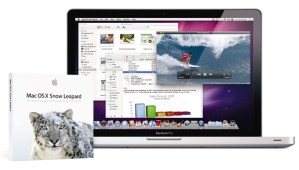
Apple has released Security Update 2011-003 to deal with the MacDefender malware and known variants that have been attempting to bilk Macintosh users out of their credit card information and money to fix non-existent problems on their computer. The update is available for Mac OS X 10.6.7 and Mac OS X Server 10.6.7, and patches Snow Leopard’s built-in file quarantine system to detect MacDefender and known variants. And, in case new variants emerge, Macs with the security update will check for new malware definitions daily to make sure users’ machines stay safe.
Apple will not be offering a security update to protect earlier versions of Mac OS X against MacDefender. Users of earlier versions of Mac OS X can still follow Apple’s directions for manually removing the malware, although there’s no promise that Apple will continue to provide removal information if new variations appear, or new malware targets the platform.
Users concerned about the security software contacting Apple every day can disable the automatic update check in Mac OS X’s Security preferences.
Apple announced a week ago it would be issuing an update to Mac OS X to combat the MacDefender malware. The move marks one of the only times the company has issued a software update specifically to combat a real-world malware threat on the Macintosh platform.
The spread of MacDefender may indicate malware authors will no longer be overlooking the Mac platform as they attempt to take over personal computers and/or collect personal information—or, in the case of MacDefender, simply try to trick users into handing over their details. Although Apple has responded directly to the MacDefender threat, there’s not yet any indication the company will continue to do respond to malware threats should any appear—Apple could well leave malware and antivirus software to third parties. However, Mac OS X Snow Leopard does have a rudimentary file quarantine capability, and the daily update capability incorporated into Security Update 2011-003 could enable Apple to distribute signatures for malware other than MacDefender variants.
Apple is currently working to complete Mac OS X 10.7 Lion, which (along with many new features) incorporates under-the-hood changes intended to make the Mac OS X platform more secure.
Editors' Recommendations
- Does your Mac need antivirus software in 2024? We asked the experts
- This Mac malware can steal your credit card data in seconds
- This critical macOS flaw may leave your Mac defenseless
- Apple’s antivirus strategy for Mac has gone fully preemptive, but is that enough?
- The best new MacOS Monterey features Apple just announced


